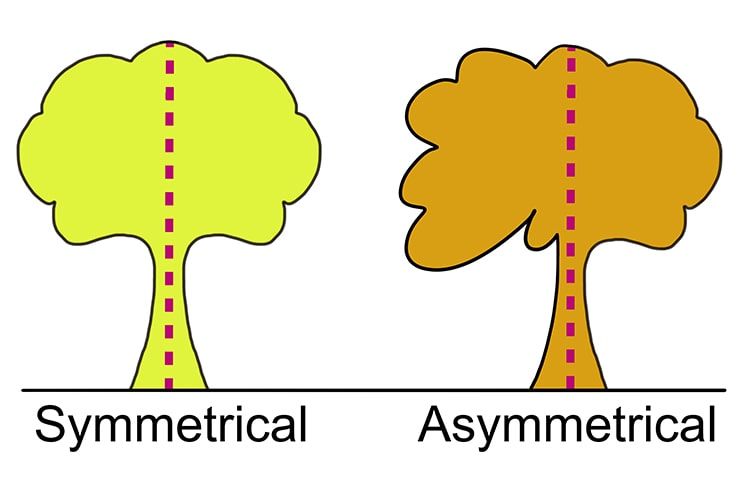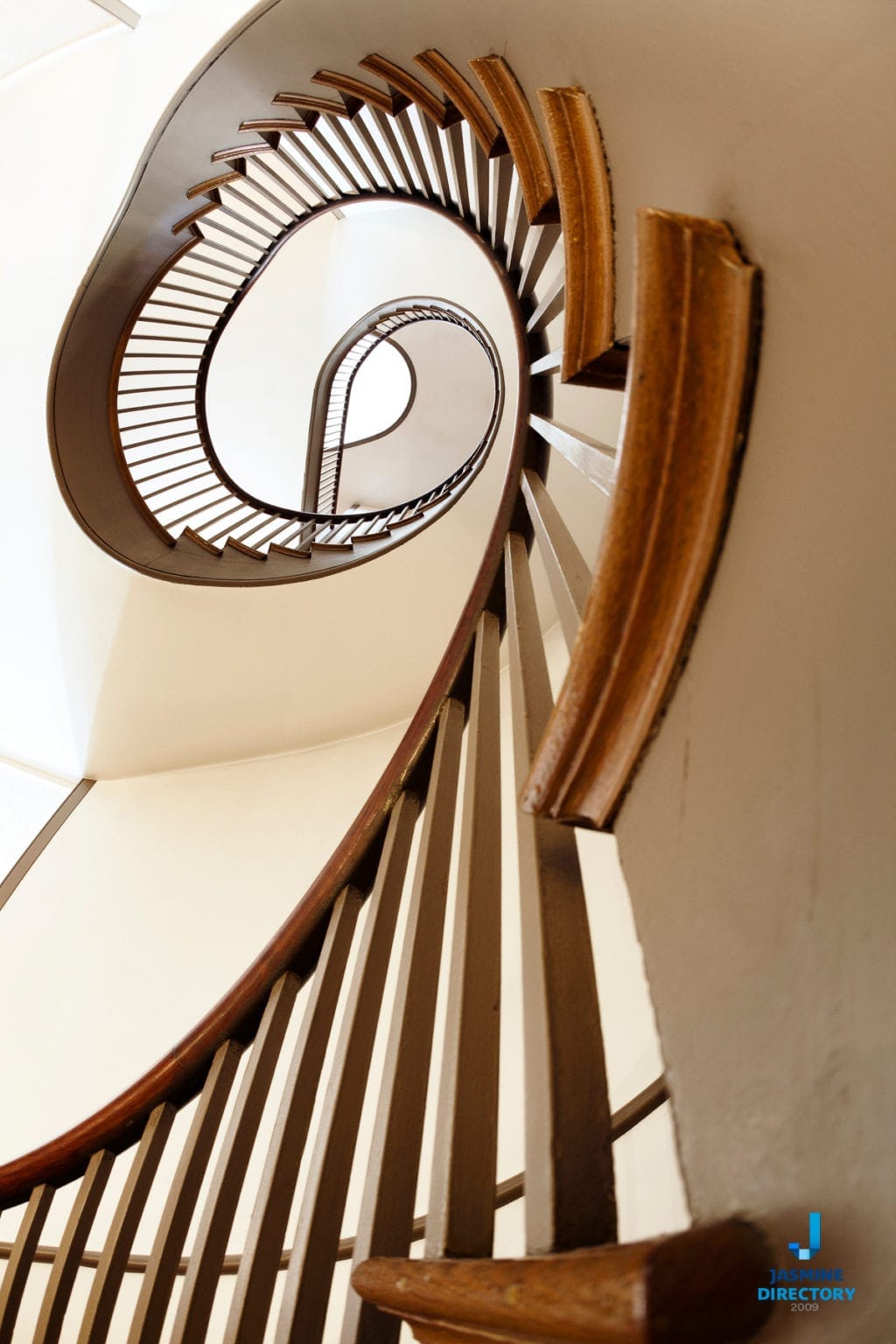Have you ever looked at a famous face and just felt a certain pull, a unique kind of charm that's hard to put your finger on? It's kind of fascinating, isn't it? Sometimes, what we find most captivating in people, especially those we see on screens and stages, isn't perfect balance at all. Instead, it's something a little different, a slight tilt or an unexpected curve. This idea, this slight difference from one side to the other, is what we call asymmetry, and it's actually a huge part of what makes some of our favorite stars so incredibly memorable.
You know, for a long time, we were taught that beauty meant everything was perfectly mirrored. Think about it: a face that's exactly the same on both sides, like a reflection. But if you really look closely, very, very few people, even the most stunning ones, have that kind of absolute symmetry. In fact, many of the faces we adore most, those belonging to our beloved asymmetrical celebs, actually have distinct differences from one side to the next. It’s almost like a secret ingredient to their star power, a subtle touch that makes them stand out.
This idea of things not being identical on both sides, that's what asymmetrical truly means. It's having parts that don't quite match up in size or shape, or you know, just aren't mirror images. My text explains it well, saying it's "having two sides or halves that are not the same." It’s not about being "wrong" or "flawed"; it's about a kind of visual interest, a dynamism that catches your eye. This post will explore why these distinct features in famous people often add to their allure, making them more relatable and, in a way, more human.
Table of Contents
- What is Asymmetry, Anyway?
- The Unexpected Beauty of Asymmetrical Features in Celebrities
- Why We Are Drawn to Asymmetrical Celebs
- Famous Faces and Their Unique Asymmetry
- Beyond the Face: Asymmetry in Style and Performance
- Asymmetry and the Evolving Idea of Beauty
- Your Questions About Asymmetrical Celebs, Answered
- Embracing the Unbalanced Charm
What is Asymmetry, Anyway?
So, what exactly are we talking about when we say "asymmetrical"? Well, My text really helps us get a handle on it. It means "having two sides or halves that are not the same." Think about it: if you draw a line right down the middle of something, and the two halves don't look identical, then it's asymmetrical. A square, for instance, has lots of lines where you could fold it and both sides would match up perfectly; it's symmetrical. A circle, that's even more symmetrical, with infinite lines of perfect balance.
But when something lacks that balance, that mirrored arrangement, that's asymmetry. My text explains it as "having parts on either side or half that do not match or are not the same size or shape." It's not just about faces, either. You could have a dress with a crooked hemline, and that's an example of an asymmetric design. It’s often an intentional part of how something is put together, like a shirt with an asymmetric neckline, to create a certain look. In some ways, it’s a deliberate choice to break from perfect mirroring.
In design and visual arts, you know, asymmetry refers to a composition that isn't divided into equal halves. It doesn't have a central point where everything balances out perfectly. Instead, asymmetrical designs use varying sizes, colors, and shapes to achieve a visual balance that isn't mirrored. This can, in fact, create a sense of dynamism or visual interest. It’s a way of making things more lively, more engaging, because your eye has to work a little to find the balance, which is pretty neat.
The Unexpected Beauty of Asymmetrical Features in Celebrities
Now, when we talk about asymmetrical celebs, we're often looking at facial features. In the human body, My text points out that "asymmetry can refer to differences in the size, shape, or position of limbs, features, or organs." For faces, this might mean one eye is slightly larger than the other, or one side of the mouth turns up just a little more, or perhaps a jawline that's not perfectly even. These aren't flaws, you know, but rather unique characteristics that make a face distinct.
It's pretty interesting, but what some might consider an "imperfection" is often what makes a celebrity truly stand out. Think about it: if everyone had perfectly symmetrical faces, wouldn't things be a bit, well, boring? Asymmetry adds character, a story to the face, if you will. It’s a subtle deviation from the norm that makes a person more memorable, more intriguing. This distinctiveness is a powerful tool in the entertainment world, making stars more recognizable and, honestly, more human.
The human brain, it seems, is actually quite good at picking up on these subtle differences. While perfect symmetry is often associated with traditional beauty standards, a touch of asymmetry can signal uniqueness and individuality. It’s like a visual signature. For actors, this can even add to their range, allowing them to convey a wider array of emotions or portray more complex characters. A slight crooked smile, for instance, can convey so much more than a perfectly even one, can't it?
Why We Are Drawn to Asymmetrical Celebs
So, why do we find asymmetrical celebs so appealing? There are a few thoughts on this. One idea is that asymmetry makes a face more authentic, more real. In a world where perfection is often Photoshopped and airbrushed, a face with natural, slight imbalances feels more grounded. It’s a reminder that beauty isn't about flawless uniformity, but about the unique combination of features that make each person who they are. This relatability is a very powerful draw, you know.
Another perspective suggests that asymmetry creates visual interest. When something is perfectly symmetrical, your eye can take it all in very quickly. But with asymmetry, your gaze might linger a little longer, moving around the face to take in the different elements. This subtle visual journey keeps you engaged, making the face more captivating. It’s like a piece of art that invites you to look closer, to discover its nuances. My text mentions this creating "a sense of dynamism or visual interest," which is spot on.
Also, there's a certain charm in uniqueness. In a sea of similar-looking faces, those with distinct asymmetrical features truly pop. They're not just another pretty face; they're *that* face, the one you remember. This individuality helps them forge a stronger connection with their audience, because they feel more like a real person with a real story, rather than just an idealized image. It's almost as if their slight imbalances make them more approachable, more relatable in a very human way.
Famous Faces and Their Unique Asymmetry
When you start looking, you’ll notice that many beloved asymmetrical celebs owe a part of their iconic look to these very differences. Take Joaquin Phoenix, for example. His facial scar and the way his features are arranged give him a distinct, intense look that is very much his own. It’s a significant part of his acting presence, adding depth to his roles. You can’t imagine him without that unique quality, can you?
Ryan Gosling is another one. While widely considered handsome, if you examine his face closely, you’ll find subtle asymmetries that contribute to his brooding, yet charming, appeal. It’s not a perfectly balanced face, but that's precisely what gives it so much character. It adds a certain edge, a touch of something unexpected that makes him more than just conventionally attractive. This distinctiveness, you know, helps him stand out in Hollywood.
Natalie Dormer, known for her captivating smirk, is a prime example of how a distinct asymmetrical feature can become a signature. Her unique smile, which often seems to play on one side of her face more than the other, is incredibly expressive and memorable. It’s a feature that audiences instantly recognize and associate with her, adding to her mystique and charm. It’s actually quite brilliant how she uses it in her performances, isn’t it?
Even iconic figures like Marilyn Monroe, when studied closely, reveal subtle facial asymmetries. Her famous gaze, for instance, sometimes showed a slight difference in her eye shape or size, contributing to her alluring, almost ethereal quality. These tiny variations often enhance rather than detract from perceived beauty, proving that perfection isn't always symmetrical. It just goes to show that beauty comes in many forms, some of which are surprisingly unbalanced.
Beyond the Face: Asymmetry in Style and Performance
It's not just about physical features, either. The concept of asymmetry can extend to how celebrities present themselves, or even how they approach their craft. Think about a musician whose stage presence isn't perfectly choreographed but rather raw and spontaneous, or a comedian whose timing is a bit off-kilter in a way that makes their jokes even funnier. This kind of "performance asymmetry" can be just as captivating as physical asymmetry, in a way.
In fashion, asymmetrical designs are often chosen by celebrities to make a statement. An outfit with an uneven hemline, a jacket with one lapel larger than the other, or even a hairstyle that's longer on one side than the other – these choices create visual interest and show a willingness to break from traditional norms. My text mentions "a dress with a crooked hemline" as an example of asymmetry, and that’s a pretty good illustration of how it's used intentionally.
This deliberate use of imbalance in style or performance can mirror the natural asymmetry found in faces, making the celebrity seem more avant-garde, more artistic, or simply more daring. It suggests a personality that isn't afraid to be different, to stand out from the crowd. This boldness, you know, often resonates deeply with fans who appreciate authenticity and originality. It's a way of expressing individuality that goes beyond just looks.
Asymmetry and the Evolving Idea of Beauty
The appreciation for asymmetrical celebs really highlights how our idea of beauty is always changing. For a long time, the ideal was often portrayed as perfectly symmetrical, almost machine-made. But as we've become more aware and, frankly, more accepting of natural variations, the appeal of asymmetry has grown. It’s a shift from a rigid standard to a more inclusive,
![Design Dictionary | Venngage | Asymmetry [Definition]](https://venngage-wordpress-design.s3.amazonaws.com/uploads/2019/10/Asymmetry-Example-Venngage.jpg)


Detail Author:
- Name : Noemie Auer DVM
- Username : champlin.bertram
- Email : lenny96@klein.info
- Birthdate : 1990-10-17
- Address : 10217 Rosalind Village Suite 017 South Rickie, NH 02883
- Phone : (937) 764-1233
- Company : Purdy and Sons
- Job : Automotive Glass Installers
- Bio : Aut ut quasi aut saepe. Quibusdam veritatis enim aliquid. Dolorem nostrum rem est quidem. Rerum qui occaecati sunt natus in saepe. Ut ut voluptas nulla minus.
Socials
twitter:
- url : https://twitter.com/valentin1686
- username : valentin1686
- bio : Doloribus assumenda maiores doloribus ipsam voluptas dolores qui. Laudantium id rerum repellat eos. Nesciunt non blanditiis praesentium et iure quod qui.
- followers : 608
- following : 1098
tiktok:
- url : https://tiktok.com/@kemmerv
- username : kemmerv
- bio : Sed ea est sed porro. Aut non illo deserunt quia quidem dignissimos dolorem.
- followers : 452
- following : 675
linkedin:
- url : https://linkedin.com/in/kemmer2001
- username : kemmer2001
- bio : Enim cum et laborum omnis.
- followers : 1936
- following : 979